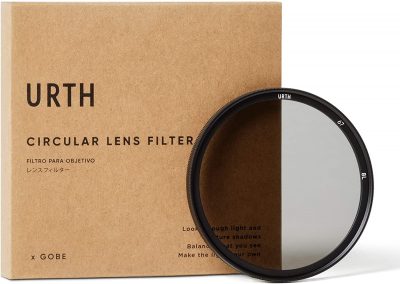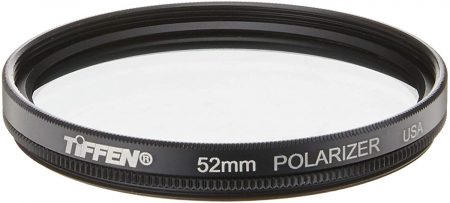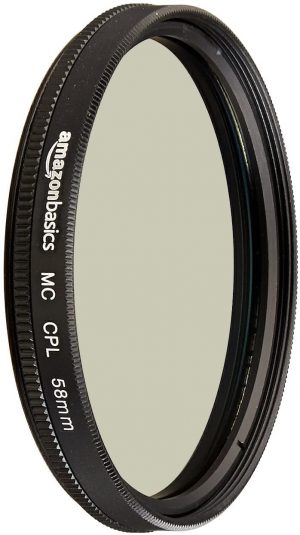In the photography world, there are hundreds of different filter types that offer something to the right photographer. But polarizing filters are one of the few (along with neutral density filters) that belong in the bag of nearly every photographer. But before you pick up one, you might want to know what the differences are between a linear vs circular polarizing filter to make an informed decision!
What is a Polarizer and Why Do I Need One?
Polarizing filters allow you to cut through the atmospheric haze as well as the glare on reflective surfaces like glass and water. However, that also includes more subdued glare from leaves, metal, rocks, and anything else that reflects white light. The result is a contrast-rich, crisper-looking template to edit further if you wish.
A polarizer filters out light that isn’t oriented to a particular angle (polarized; scattered). By selectively filtering out this scattered light, you get the deeper tones and richer contrast that’s especially useful for landscape and nature photography. Polarizing filters can rob you of around 1 stop of light but it’s usually easy to get that back through an adjustment of the aperture, ISO, or shutter speed. Each element of the exposure triangle!
If you’re interested in learning more about polarizing filters and how they work, take a look at my in-depth article on “What is a Polarizing Filter?”

Photo by Jasper Boer on Unsplash
Linear vs Circular Polarizing Filters
There are two types of polarizing filters to consider: linear and circular polarizing filters. Of the two, a linear polarizing filter is the simpler and least expensive. The way it works is it filters out light polarized (angled) at a 90-degree angle vertically. The filter can also be rotated 90 degrees to allow horizontally polarized light to enter. Most light sources have a mixture of both linear and horizontally polarized light but the reflections and glares are usually of one kind or the other
A circular polarizer is very similar to a linear polarizer. In fact, it consists of two separate pieces of equipment, the first of which is a standard linear polarizer! Therefore, the resulting photo is going to look the same. However, circular polarizers address an issue that linear polarizers don’t: accurate metering of the scene by your camera’s light meter.
In old film SLR and newer DSLR cameras, there was the possibility of linear polarizers confusing the camera’s light meter due to it blocking some of the incoming light (the film remained sensitive to all wavelengths, regardless of polarization).
The resulting photo could often be off by as much as ½ to 1 stop of light (½ to twice the normal level of light exposure). A linear polarizer can also cause slight autofocus errors in the phase detection array SLR and DSLR cameras use.
The way a circular polarizer corrects this is through the use of a quarter-wave plate that’s attached to the back of the linear polarizer. The quarter-wave plate then circularly polarizes the light for the sake of the camera’s metering system. And this circularly polarized light is then reflected by the SLR (or DSLR) camera’s internal mirror, preventing your exposure from being off.
That said, circular polarizers are only strictly necessary if you have an older SLR-style camera. Mirrorless cameras that have on-chip phase detection autofocus systems can use linear polarizers with no issues because the internal mirror of an SLR camera is part of the reason why polarizing filters get confused. And since linear polarizing filters are slightly cheaper and use one less glass element, you may prefer using one to a circular polarizer!

Photo by Goh Rhy Yan on Unsplash
Choosing a Polarizing Filter
Besides choosing a linear vs circular polarizing filter, there are a couple of other considerations you should take into account. Lens filter thread diameter, any color casts introduced…All contribute to the final image. Let’s take a closer look at each of these aspects.
Lens Filter Thread Diameter
This is by far the most important consideration because every camera lens has a specific diameter. And that diameter allows you to mount filters of a certain size to it. It does no good owning a high-quality 49mm polarizing filter if your landscape lens has a 72mm filter thread!
Larger lenses will usually have a larger filter thread diameter, as will lenses with a wider maximum aperture. And the larger the filter, the more glass is involved, which naturally makes them more expensive than smaller filters would be. This is a hidden cost of larger lenses and sensor sizes that is rarely considered until it’s time to buy accessories!
Introduced Color Casts
When shopping for a linear or circular polarizing filter, make sure you read both the manufacturer’s literature and customer reviews. Because imperfectly machined polarizing filters, especially cheap ones, can introduce a color cast to the image. All polarizing filters will reduce incoming light; they have to, in order to block the light polarization we don’t want.
But poor quality polarizers may let in more red, yellow, blue, etc, than the rest. This imbalance in how light is filtered results in your image having a slight tint to the scene after you’ve increased your exposure to correct for the initial light loss.

Photo by Pietro De Grandi on Unsplash
Polarizing Filters Recommendations
Urth Circular Polarizing (CPL) Lens Filter
Urth Circular Polarizers are some of the finest on the market. They are rated at 99.9% accuracy in cutting out vertical or horizontally polarized light for ideal contrast and colors. They use an 8-layer nano-coat and impact-resistant Japanese AGC glass. And they also donate funds to local communities in order to plant 5 trees in areas affected by deforestation!
Tiffen Linear Polarizer
Tiffen filters are the brand photographers turn to when they are building up a collection on a budget but they don’t want to skimp on the quality. Tiffen filters are typically over 95% accurate in blocking polarized light, providing plenty of contrast enhancement at a fraction of the price of other brands!
AmazonBasics Circular Polarizer Camera Lens Filter
AmazonBasics Circular Polarizing filters are an excellent way to experiment with linear vs circular polarizing filter technology. If you’re still unsure of what impact a polarizing filter will have on your style of photography, these filters let you reap most of the benefits without having to shell out a ton of money!
Related posts
The Best Polarizing Filters For All Budgets
What Is Polarizing Filter? – Everything You Need To Know
Thanks for reading, I hope you enjoyed the article, in case you have any questions just drop them below & I will be happy to answer you.
The featured Photo by James Douglas on Unsplash
If you enjoy the site, don’t forget to subscribe, we will only inform you when a new article is posted.












In my experience, a circular polarizer doesn’t work very well (or at all) for cross-polarization photography. For best results, use a linear polarizer if you want to capture interference figures in plastics and birefringent minerals.
I need a new circular polarizing filter. But I have also been told that I over use it. So I’ll try to readjust some things. It’s generally not a good idea to use a circular polarising filter with a wide-angle lens. And I am guilty of that. This is because CPL filters work best when they’re at a 90-degree angle away from a light source, such as the sun, and a wide-angle lens usually covers more than 90 degrees.
Thanks for your input Ann!
This is a very detailed and informative post on polarizing filters and why you need them. I knew that one could use a filter on your camera, but did not know that there were different types, or then even circular and linear. I can fully understand now that a polarizing filter is essential for taking professional photographs.
Do you think a beginner photographer will benefit from using a polarizing filter? Or does one need more experience first?
Hey Linecowely! actually, polarizing filters doesn’t need more experience, it depends on your photography subject. For example, when you shoot landscape polarizing filters can be very effective to eliminate the strong sun light & make the sky more blue. Also, another advantage of it that it can eliminate reflections if you are shooting a person with eye glasses or behind a window. You can read here this post for more information about polarizing filters. Thanks for dropping by!